Hand Carved Spreaders are an example of sloyd and a chance to work our way out of dependence on plastics and the global economy!
I’ve always enjoyed woodworking. My dad made me a small workbench and gave me a hammer and nails to practice with for my fifth birthday, so it’s been a long-time love affair. But as we hurtle towards the edge of a rather steep cliff as a country, piling on the trillions of debt (does anybody understand how much a trillion of anything really is?), and outsourcing the production of our toothbrushes, tennis shoes and food fabrication, I’m making hand carved wooden spreaders. The importance of wooden items in our daily lives has long since been lost. Why use wooden utensils or eat off a wooden plate when you can have Chinese China and plastic plates leaching into our hand-made, home-cooked, locally grown meals? I mean, money might not grow on trees, but just guess what does!?
On a more serious note, sloyd is a fascinating word derived from the Swedish word Slöjd, which means handicraft. There is a rich tradition of hand carved wooden kitchen utensils from Sweden and I’ve enjoyed a hobby level study of the craft. This link will give you a plethora of images of the Master Sloyder Wille Sundqvist and his work. I’ve invested in the tools required to take branches and small trees and turn them into the useful items we need for eating and cooking. There’s a lot of complicated technology being promoted as “sustainable” these days, but I think we’re way off track. Sustainability is a very simple thing really: a few tools and bit of skill along with wood that is usually run through a chipper, and the combination of these things can provide for some of the most basic needs my wife, my kids and I have – plates to eat off of, spoons to get the food from a wooden bowl into our mouth, a few ladles and spatulas. Do we really understand what we’ve done by living a life in which we must buy everything we need (rather than make it our self)? And now we’ve outsourced all these items to be made a little cheaper in a foreign country, as if paying someone else to make everything we need wasn’t a fragile enough system! Are we really rich enough in this country to pay a whole slew of full-time employees to grow our food and to produce all the little daily items we are greatly dependent on?
Here’s a run down in words and pictures on the process of making an all-purpose, hand carved wooden spreader. My sister made me a sign and these spreaders are now for sale on our back porch at the farm. And yes, I realize the potential contradiction: what’s so different about me selling you a hand carved spreader, rather than buying one Made In China? Certainly that’s a voluminous subject but one reason is similar to buying your food locally – it leaves the money here at home, where it can bounce back and forth between neighbors as a means of simple transactions, rather than using those same dollars to further the complicated, greed-driven global economy. We would do well to produce everything we can ourselves, but a little bit of the old-time village where we could trade with the local butcher, baker and candlestick maker is far more resilient to global disaster than our current economic situation.
On to the process. The first tool you need is some kind of saw. Right now I use a folding hand saw, although I’m in the middle of restoring a vintage American buck saw, which is what old time farmers would have used to convert dead limbs and such into firewood to heat their homes.

Now I take a froe and club and split the wood into pieces large enough for a spreader. Using the froe, as opposed to a saw, allows me to exploit the weakness in the wood – the fact that a sharp blow with a wedge-shaped tool will split it into pieces – to gain the strength of wood in a small item like a spreader. The strength of wood is having the long fibers run the full length of the spreader. Think of wood as a bundle of soda straws. Splitting a handful of straws down the length of them is very easy, but their strength is obvious if you take that handful of straws and try to break them in half.
After the froe comes the carving axe. Any type of hatchet can hack wood off, but I’ve got an axe that Wille Sundqvist designed and the fine company Gransfors Bruks produces. It’s broad, curved bit and beard make it ideal for the carving of wooden utensils. The axe shapes the blank into a relatively flat piece, ready for laying out the outline of the spreader.
The axe and a bow saw quickly shape the outline.
Then I’m ready for the sloyd or knife work. The knife on the left is a large Svante Djärv which is great for the initial cuts that are needed to smooth out the rough axe work. The knife on the right is made by Del Stubbs of Pinewood Forge in Minnesota. He’s the premier tool maker for the growing sloyd movement in the United States.
After the knife work, the spreader takes a little bath in cold pressed organic flax oil. Woodenware should not be washed in the dishwasher because of the heat; warm water and little mild soap is all you need to clean it after use. A little flax oil periodically also helps develop that patina that only a well used, well-worn wooden item can.
Then, the spreader gets branded with a hot iron which stamps “My Dad & Me.”
Here are the spreaders displayed on our porch and the sign my sister made – isn’t it great? What do you think of our wooden spreaders and Anna’s hand drawn sign? And what do you think about our dependence on a complicated global economy for our every need?

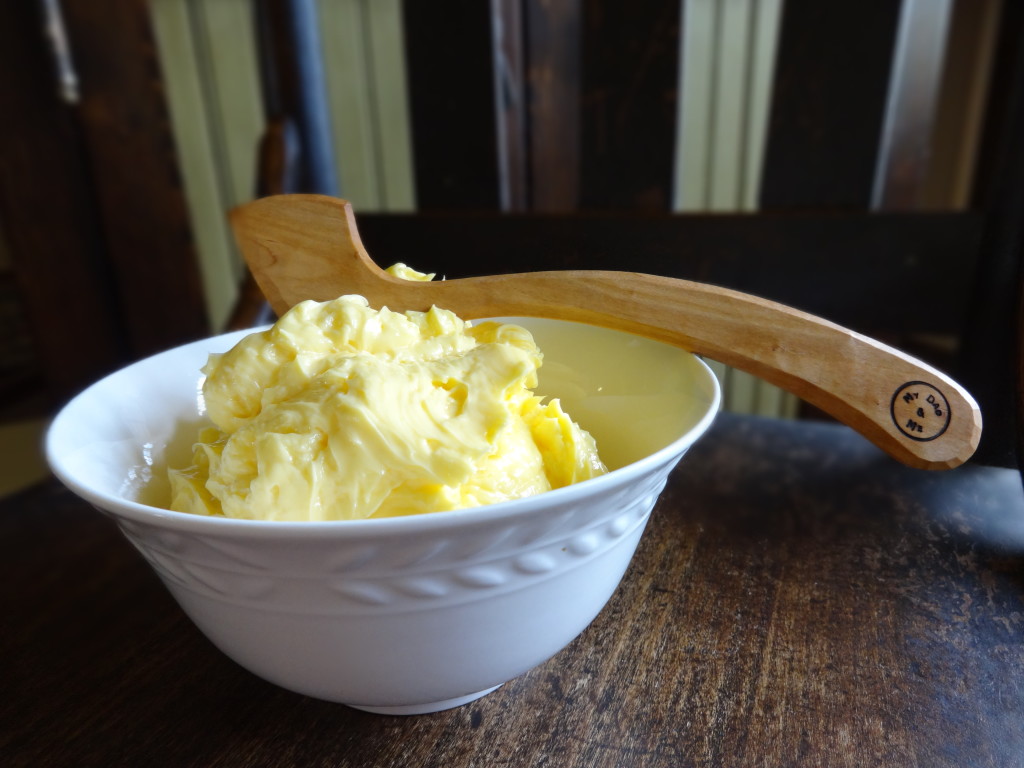
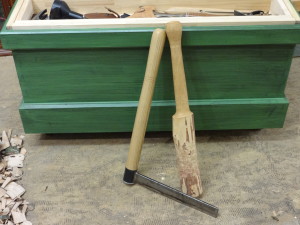
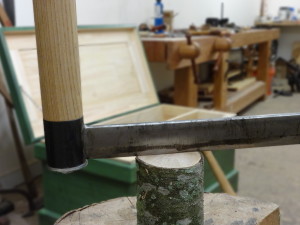
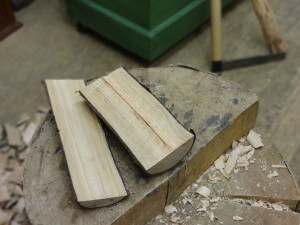
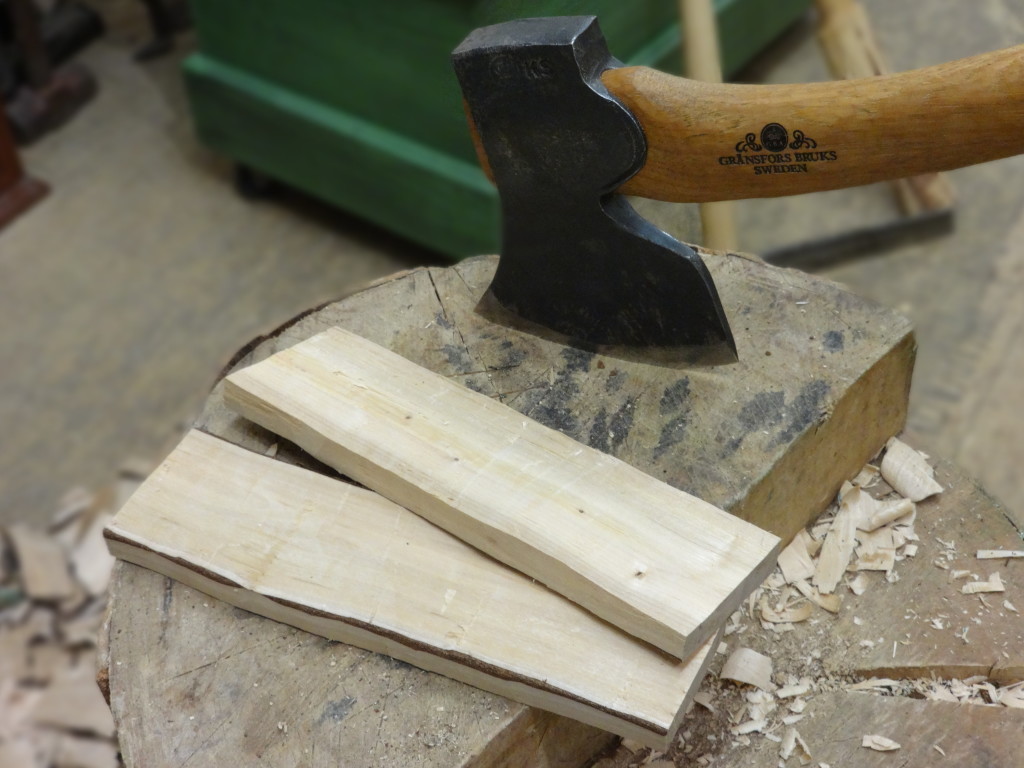
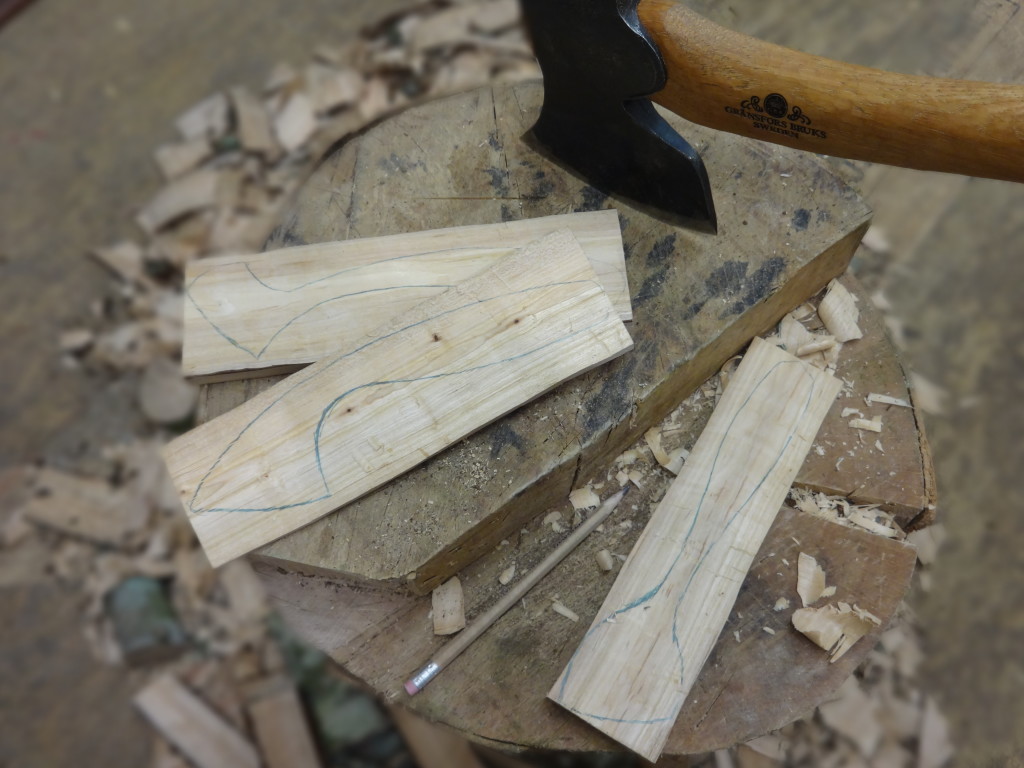
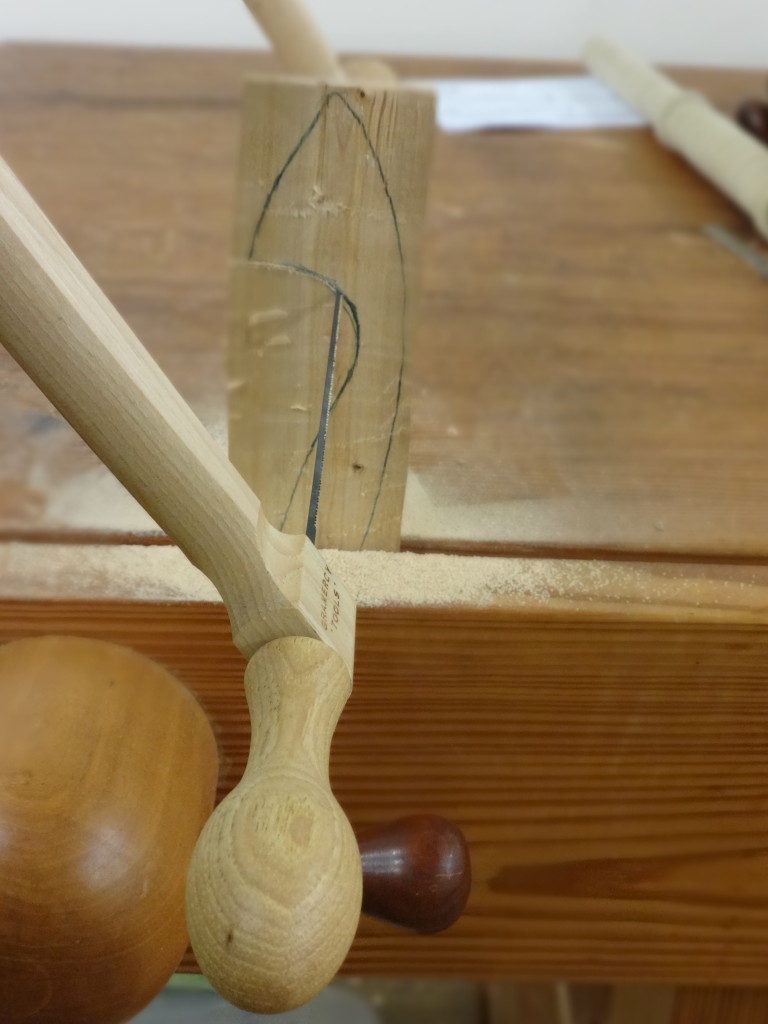
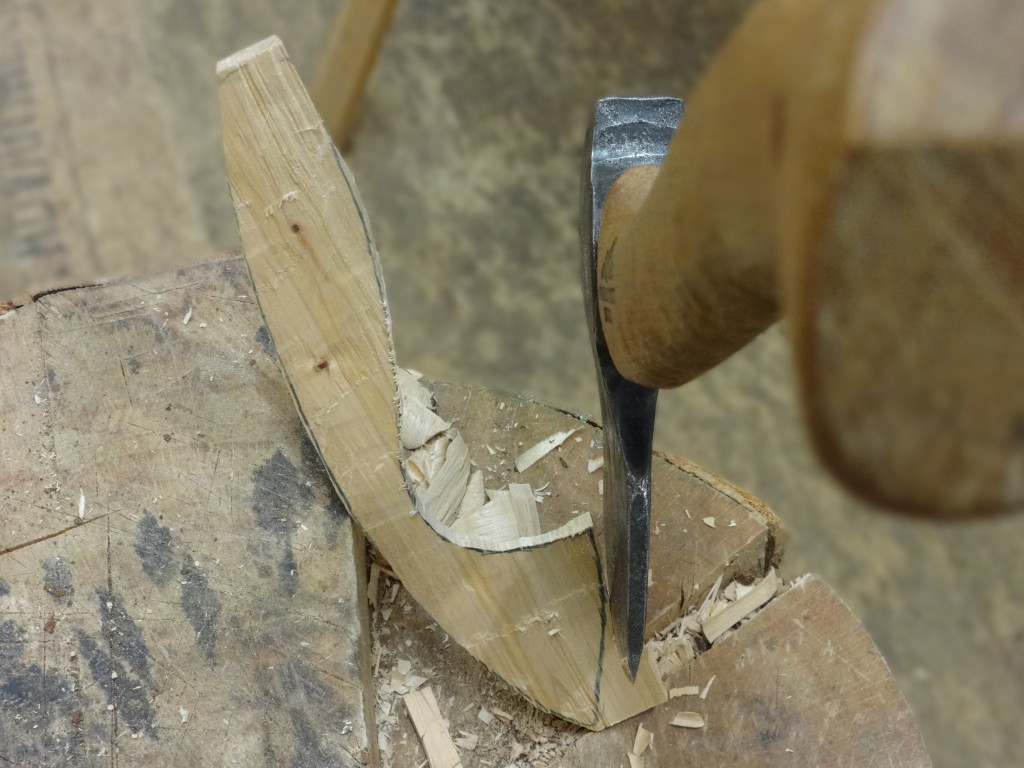

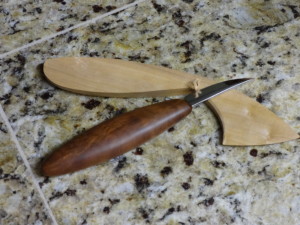
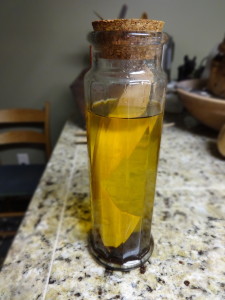
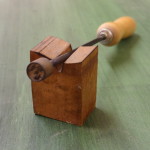
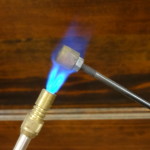

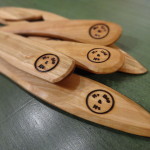
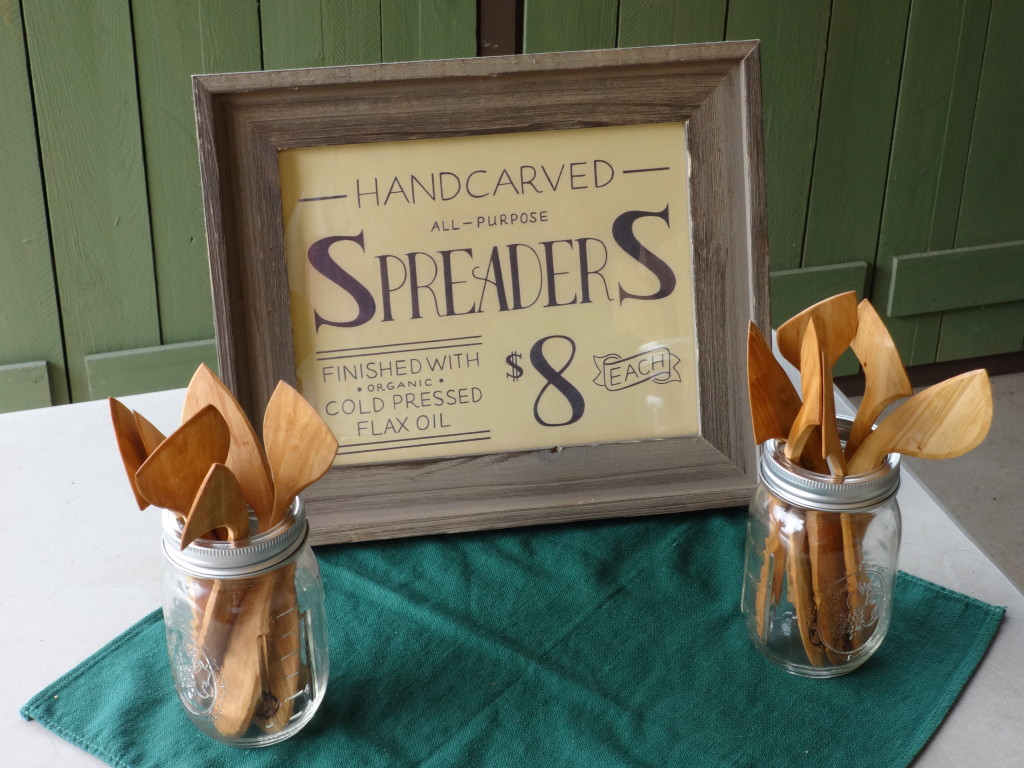
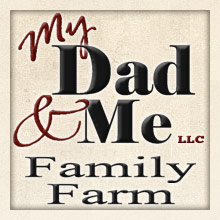
Very nice! Other than spreading butter, what all do y’all use them for?
Thanks Crystal! I’ve got three different shapes, so between the three they’re good for spreading just about anything from butter to jam to peanut butter. They work well as a small cutting and serving spatula too for things like cake or casserole.
Thanks for the info…they’re lovely!
What wood do you use?
I’m carving cherry right now, Stefan. But birch, maple, even poplar would work – persimmon, apple, pear, anything fairly hard and close grained.
Hi David! These are beautiful and I’ll be sure to pick one up next time I’m at the farm. You mention to not wash in the dishwasher because of the heat. Does this mean they shouldn’t be used for cooking either? Thanks!
No, not at all Marie! I should have made that clearer: the dishwasher combination of heat, water and strong detergent actually dries out the wood, driving out the flax oil finish. However, cooking with wooden utensils is actually good for the wood – the oil and grease from cooking help keep the wood “finished” with food oils, which keeps the wood from drying out.
That’s what I hoped! Thanks!
Does your advice about washing wooden utensils cover those that I’ve bought commercially? I love using my wooden spoons and spatulas when cooking. Can I bring them back from all the time I’ve thrown them in the dishwasher? WHere can I get cold pressed flax oil?
You can absolutely help your wooden wear by stop washing them in the dishwasher and just hand wash them in warm water, using a mild soap just when you need it. We buy our cold pressed flax oil from a local mom and pop health food store.
Well done David, the spreaders are lovely & your skill precious.
Would you consider sending me two by mail? Naturally, I would pay shipping & packing also & could send you a check ahead of time, if that helps.
Very best wishes,
Monica
Hi Monica! Thank you for your kind comments. I’d be glad to mail you two spreaders. Let me get a picture of a couple of them and see what you like, figure shipping, then I’ll get them in the mail. I’ll send the pictures via email…
The spreaders are lovely and fascinating. I found myself wondering which one to buy. Does the shape have anything to do with function or are the shapes just your artistry?
A little of both, Dianne. All three spread butter and the like equally well, but the straight, paintbrush type can also be used to stir or even cook a bit of food in a saucepan. The hockey stick shape is mostly dedicated to spreading, and the third shape works well to cut up small cakes or casseroles.
Cut up pieces of skillet cornbread!
Pingback: My Four Hundred Dollar Crosscut Saw… Or Questions About Sustainability. |